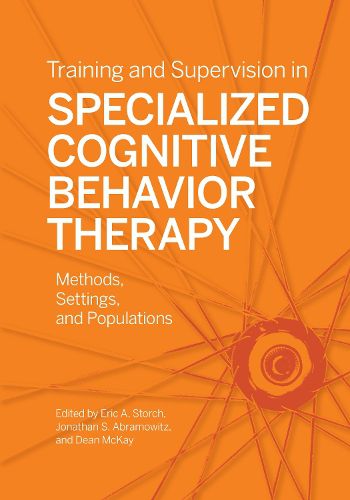Readings Newsletter
Become a Readings Member to make your shopping experience even easier.
Sign in or sign up for free!
You’re not far away from qualifying for FREE standard shipping within Australia
You’ve qualified for FREE standard shipping within Australia
The cart is loading…






This book describes training, supervision, and consultation with specialized cognitive behavior therapy (CBT) approaches, to ensure proper implementation across a variety of clinical contexts.
Although CBT is sometimes portrayed as a single treatment method, the expert contributors in this volume describe a diverse collection of cognitive behavioral theories and techniques, such as exposure therapy, acceptance and commitment therapy, dialectical behavior therapy, and child behavior management.
Contributors also review application guidelines for a variety of settings, including public schools, inpatient and outpatient medical settings, and diverse client populations representing different religious and spiritual beliefs, cultural and ethnic backgrounds, and sexual and gender minorities.
For each approach and setting, contributors describe key concepts and techniques, explain the characteristics of good and bad training cases, survey common trainee mistakes and supervision obstacles, and also address common ethical issues.
This book is intended for CBT trainees and practitioners who seek training in specialized areas, and those trained in other theoretical orientations who seek to adapt CBT techniques to their practice.
$9.00 standard shipping within Australia
FREE standard shipping within Australia for orders over $100.00
Express & International shipping calculated at checkout
This book describes training, supervision, and consultation with specialized cognitive behavior therapy (CBT) approaches, to ensure proper implementation across a variety of clinical contexts.
Although CBT is sometimes portrayed as a single treatment method, the expert contributors in this volume describe a diverse collection of cognitive behavioral theories and techniques, such as exposure therapy, acceptance and commitment therapy, dialectical behavior therapy, and child behavior management.
Contributors also review application guidelines for a variety of settings, including public schools, inpatient and outpatient medical settings, and diverse client populations representing different religious and spiritual beliefs, cultural and ethnic backgrounds, and sexual and gender minorities.
For each approach and setting, contributors describe key concepts and techniques, explain the characteristics of good and bad training cases, survey common trainee mistakes and supervision obstacles, and also address common ethical issues.
This book is intended for CBT trainees and practitioners who seek training in specialized areas, and those trained in other theoretical orientations who seek to adapt CBT techniques to their practice.